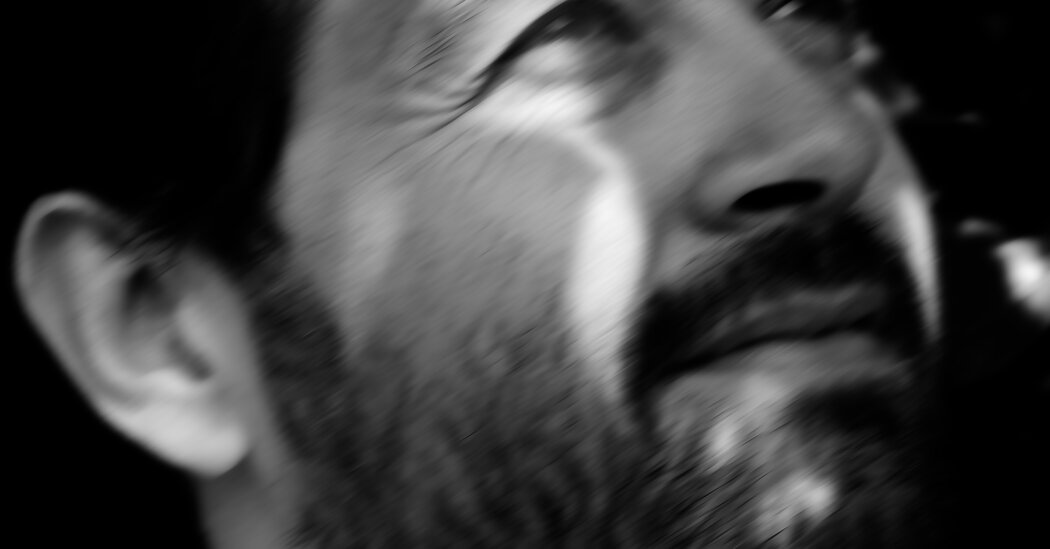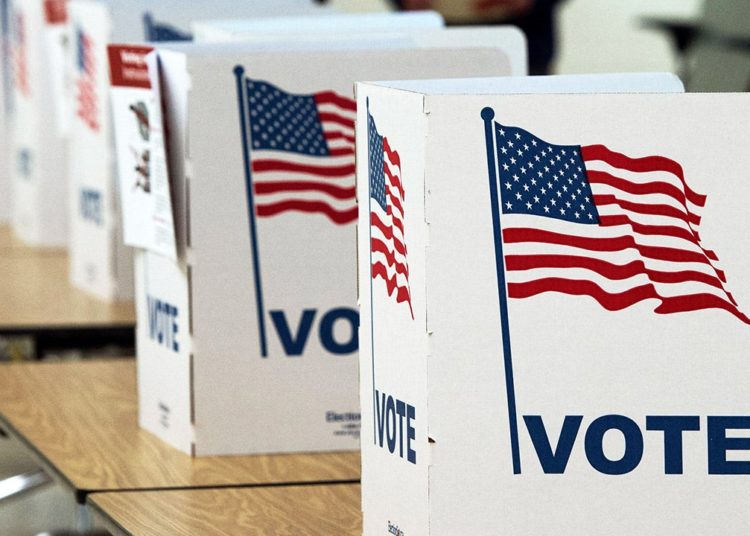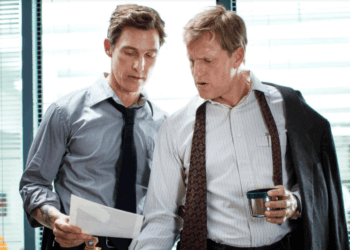Hector Berlioz’s “Harold in Italy” is full of wandering. In his memoirs he wrote that, through this symphony with viola obbligato, based on the mood of Lord Byron’s poem “Childe Harold’s Pilgrimage” and inspired by the composer’s unfruitful time in Italy, he sought to make the viola “a kind of melancholy dreamer.”
The violist Lawrence Power has spent his whole career playing “Harold in Italy.” But, he said in an interview, he has always been “completely uncomfortable and just confused by the whole piece.” It’s essentially a symphony, but completely different from a conventional one, with a viola solo part that drifts in and out of the action. Berlioz “obviously had something in mind to have the viola separate from the orchestra,” Power said, guessing that the composer “had something theatrical in mind.”
In a dramatized performance of “Harold in Italy” with Aurora Orchestra at the Southbank Center in London late last month, Power leaned into that wandering, theatrical spirit, something that has also become a hallmark of his recent work. After whistling the piece’s idée fixe, or recurring theme, while strolling from a raised platform amid the ensemble, Power recited searching sections of Berlioz’s memoirs and wandered through the auditorium, playing sections of the obbligato part with a distant, slightly aloof expression.
This is just another idiosyncratic project by Power, somebody who has championed the viola for the past 25 years, with a particular focus on new work. He’s not alone: Viola soloists often have to become champions for their instrument, which has been underappreciated throughout its history.
Despite the fact that a number of prominent composers played the instrument — most notably Mozart and Dvorák — the viola, a middle-register voice with a nonstandard shape, never emerged as a solo vehicle during the Classical and Romantic periods, while other instruments flourished. The violin in particular gained concertos by Tchaikovsky, Mendelssohn, Beethoven and Brahms that would become staples of the repertoire. In his 1752 treatise for instrument-playing, the flutist Joseph Joachim Quantz declared that “the viola is commonly regarded as of little importance in the musical establishment.”
Often demoted to an accompanying role in musical textures, the viola’s chronic absence as a solo instrument has meant that violists have had to persuade their contemporaries to write for this unusual instrument. Lionel Tertis and William Primrose, two pioneers of viola repertoire and technique in the late-19th and early-20th centuries, engaged Walton, Vaughan Williams, Bartok, Milhaud and Britten in the creation of pieces that, alongside works by Hindemith and Rebecca Clarke, would form the viola’s first real repertoire.
What these composers were drawn to, Power believes, was an instrumental curiosity that allows a chameleonic, individualized means of expression. “There’s no defined idea of what a viola is,” he said. “Every viola is a different size. It’s never standardized, because it’s not possible to make it properly.” (To produce the optimum viola for the tuning of the strings across the register would require an instrument that would be impossible for players to hold under their chins.)
This nonstandard nature of construction, combined with the vocal-like register of the instrument, leads Power to compare differences between violas to operatic fachs, or voice types. Violas of similar capabilities but different physiques have sweet spots in different registers and certain notes that ring especially clearly. Switching from instrument to instrument, “suddenly, I can become a baritone, having always been a tenor,” Power said. The trick is to contain those multitudes within a single voice.
Jessie Rodger, a director and filmmaker who runs Âme Productions with Power, said in an interview, “With Lawrence’s relationship with that instrument, he can unlock new characters, emotions, tones and feelings in a space.”
The spirit of Tertis and Primrose continues today among the world’s top viola soloists. Tabea Zimmermann, from Germany, has had works by Gyorgy Ligeti and Wolfgang Rihm dedicated to her, and Nadia Sirota, who has championed the instrument in the United States, has sought commissions from Nico Muhly and Missy Mazzoli.
Power, too, has dedicated considerable energy to working with living composers. By underwriting the costs of commissioning, and thus cutting the length of the scheduling process in half, his Viola Commissioning Circle, which began in 2019, aims to create 10 new concertos for the instrument by 2030. So far, they include works by Magnus Lindberg and Gerald Barry, as well as Cassandra Miller’s “I cannot love without trembling,” which the critic Alex Ross described as a “desolate, radiant” concerto that “reminds us how to cry.”
An earlier Miller piece, “Daylonging Slacktide,” played a part in Power’s embrace of the viola’s more theatrical side. For him, the Covid-19 pandemic was a catalyst for change. Seeking to make work linked to the period that would “stand the test of time,” he began working on a series of lockdown commissions for solo viola, filmed by Rodger in empty concert halls around Britain. Video was an integral part of the project. Miller’s piece, for example, included Power casting viola and vocal lines out to sea from the shingle beach in Aldeburgh, Suffolk.
Power and Rodger later created Âme Productions, a company dedicated to making multiformat works with an emphasis on music and film, and particularly the viola’s role as something approaching a character actor. This work required a mental shift. “You have to be much, much less precious if you want to make an interesting statement on film,” Power said. “You have to be aware that you have to do things over and over so it looks right. You have to get up at four in the morning and play walking around a church in Cornwall, just so it looks beautiful.”
Having been at the forefront of his instrument’s developments on the page for decades, Power now seeks to join other conversations. Alongside Âme projects, he is working on a musical about the group of composers who were taken to the Theresienstadt concentration camp, and plans to write a book.
The viola, Power maintains, is his mother tongue — something he holds as a badge of pride, given how many violists begin on the violin before converting. But “if you start your career at 22, and are continuing it at 47,” he said, “hopefully the conversation changes.”
The post A Musician on a Mission to Make Us Pay Attention to the Viola appeared first on New York Times.




